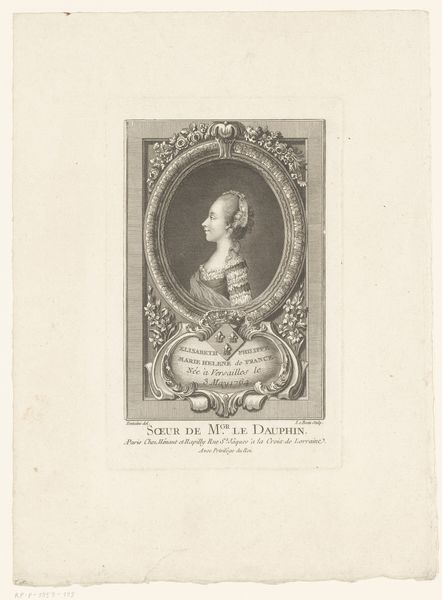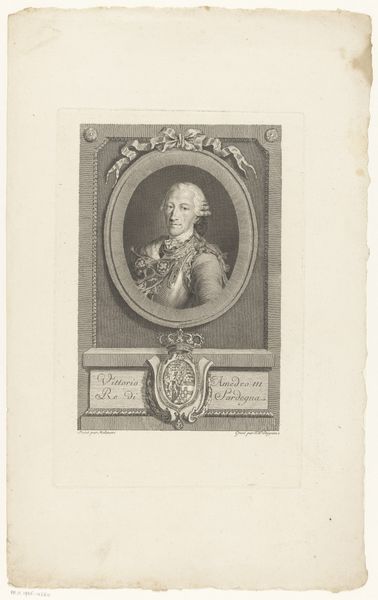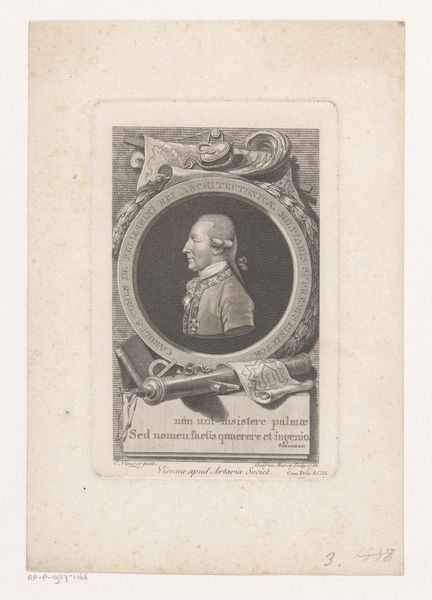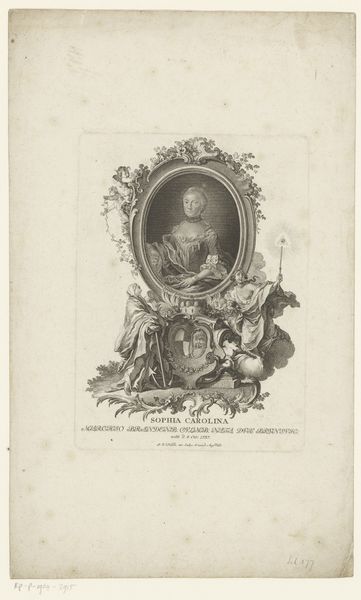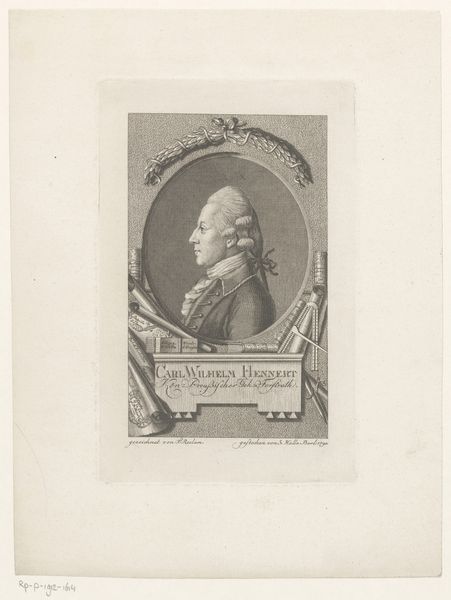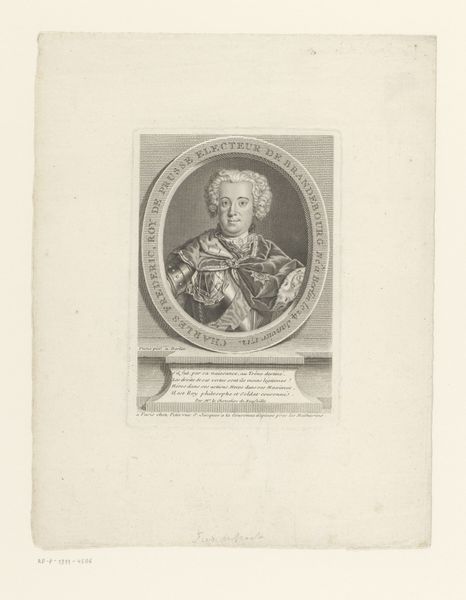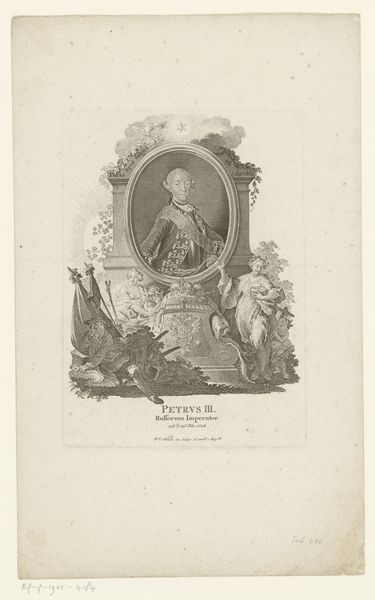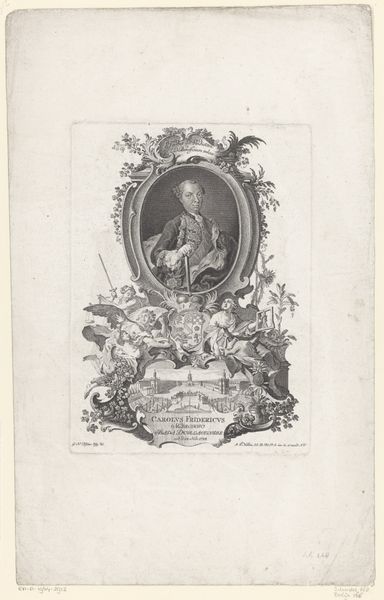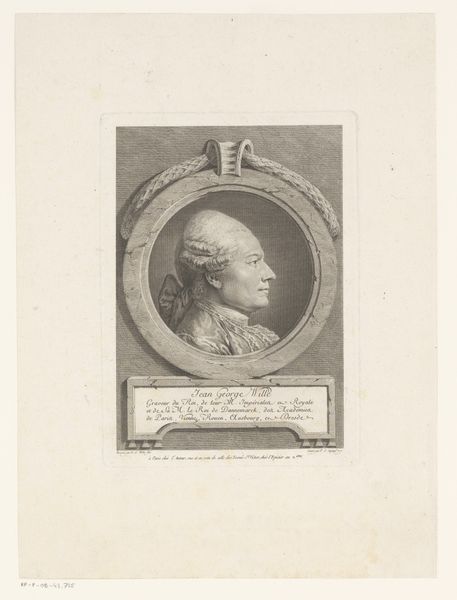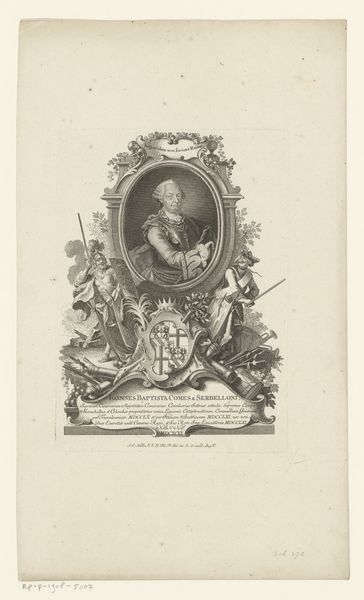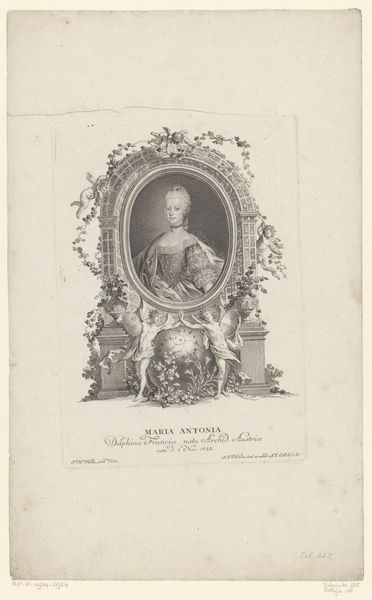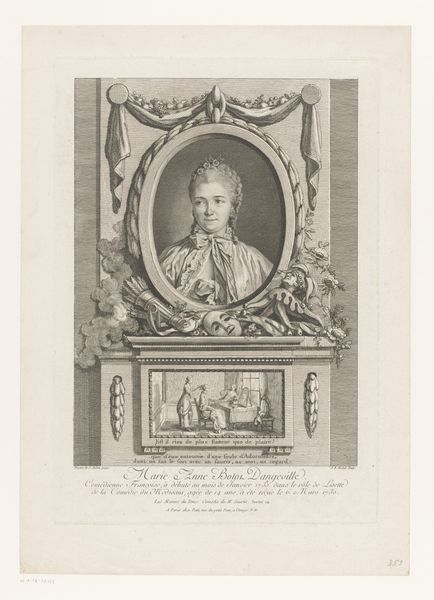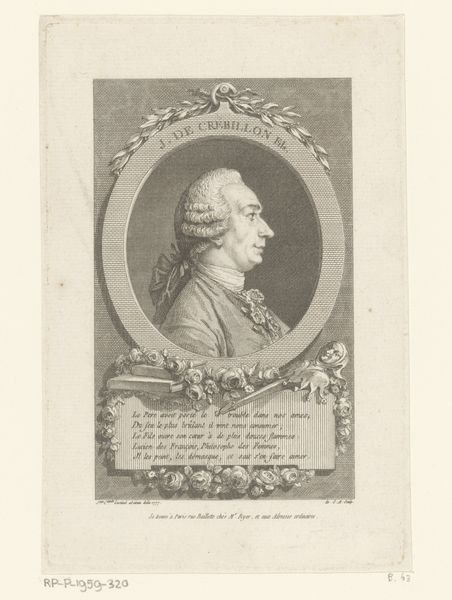
Dimensions: height 190 mm, width 120 mm
Copyright: Rijks Museum: Open Domain
This print depicting Clothilde of France was made by Pierre Adrien Le Beau, using a technique called etching. Look closely, and you can see how the image is built up of many tiny lines, all carefully incised into a metal plate. The plate would have been covered with a waxy ground, through which the artist scratched the design. Acid then bites into the exposed metal, creating the lines that hold ink. The level of detail achieved speaks to the skill of the printmaker, who must have worked with incredible precision. But it also speaks to the broader context of printmaking in the 18th century. This was a time when images were increasingly mass-produced and circulated, fueling a growing consumer culture. The portrait, once only accessible to the sitter and their immediate circle, could now reach a much wider audience. Consider the labor involved in producing each impression, and how this labor was often obscured by the seemingly effortless elegance of the final product. By understanding the material processes behind this print, we can begin to unpack its social and cultural significance.
Comments
No comments
Be the first to comment and join the conversation on the ultimate creative platform.

